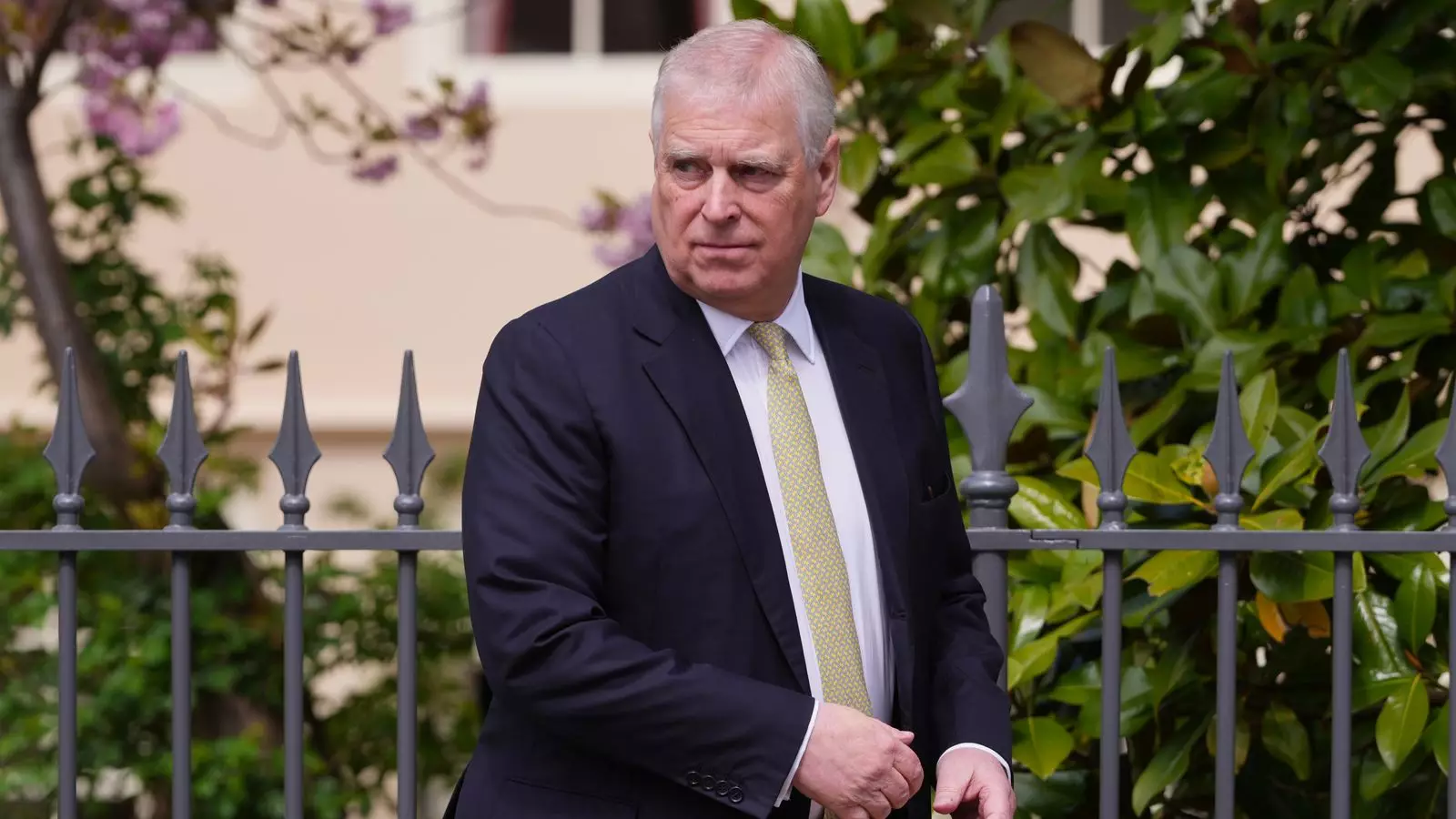As the royal family commemorated Easter Sunday in Windsor, the air was thick with more than just the scent of spring. The reflection of Prince Andrew’s presence at St George’s Chapel serves as a poignant reminder of the underlying controversies that plague the monarchy. It is striking how, despite controversies, Andrew remains a fixture at such public ceremonies, raising questions about the royal family’s commitment to accountability. This event marks the second consecutive year that he has joined the King and Queen, yet it also underscores the otherwise invisible line between public duty and personal disgrace.
Andrew’s arrival, seemingly quick and unobtrusive, contrasts sharply with the royal fanfare typically associated with Easter services. His absence from formal royal functions, particularly at Christmas, alongside the backdrop of allegations surrounding his alleged ties to a Chinese spy, suggests a family navigating turbulent waters. Why is this man still accompanying the royal family at such pivotal events? It points to a troubling dynamic within the royal institution—a balance between tradition and the pressing need for reform.
Family Dynamics and Shifting Priorities
Notably absent from this year’s Easter service were the Duke and Duchess of Cambridge, opting instead for a more private family time before their children returned to school. This decision stands in stark contrast to other royal engagements and raises eyebrows regarding the royal family’s public image. It reflects a shift in priorities, perhaps suggesting that the lives of younger royals are more aligned with contemporary values surrounding family life.
One can argue that the decision to limit the royal engagement to traditional gatherings could be interpreted as a way to minimize distraction or scandal, especially in light of Prince Andrew’s complicated history. When the younger generation of royals steps back from public engagements, are they silently expressing a desire to de-emphasize the old guard that continues to make headlines for all the wrong reasons?
The Shadow of the Monarch: Cancer, Resilience, and Compassion
The performance of King Charles III carries a dual narrative. His Easter message of “faith, hope, and love” resonates deeply, especially as he faces his own battle with cancer. Yet, there lies a palpable contrast to the chaotic narratives surrounding his brother. While Charles aims to embody virtues that uplift and unite, Andrew’s presence threatens to overshadow this intent, demonstrating how one individual can impact the monarchy’s image as a whole. It is tragic, then, that whilst Charles is fighting a personal battle, the royal family is still entangled in systemic issues that tarnish its reputation.
Even the Archbishop of York had to step in for the Archbishop of Canterbury amid an apology for mishandling past abuses. The connection between this ecclesiastical struggle and the royal family feels intertwined, as if both are navigating through a fog of accountability issues that have surfaced far too often. Each Easter sermon, each public appearance, and every message of goodwill feels like a band-aid over festering wounds that need healing.
Tradition vs. Modernity: A Call for Reflection
Tradition can be both a bedrock and a burden for institutions like the monarchy. While the Christmas and Easter celebrations have rich histories deserving of preservation, the continued presence of troubled individuals like Prince Andrew raises critical questions about what roles these traditions should play. Should the honor associated with royal participation be extended to those who carry the weight of public disgrace? As we reflect on the past and look toward the future, it’s evident that the monarchy must reconcile its historical legacy with modern accountability.
For a royal family that often positions itself as a moral beacon, the lack of decisive action against members guilty of scandal not only dilutes their message of hope but also alienates the very public they seek to inspire. By opting to uphold such narratives of tradition without meaningful reform, the royals risk surrendering their relevance in a rapidly changing society that demands more than mere representation.
In a world where transparency and responsibility carry weight, the royal family finds itself at a pivotal crossroads. Will they continue to be mere observers of tradition, or will they take a stand for the integrity that their long history deserves? The choice will define their legacy—perhaps far more than any Easter sermon ever could.

